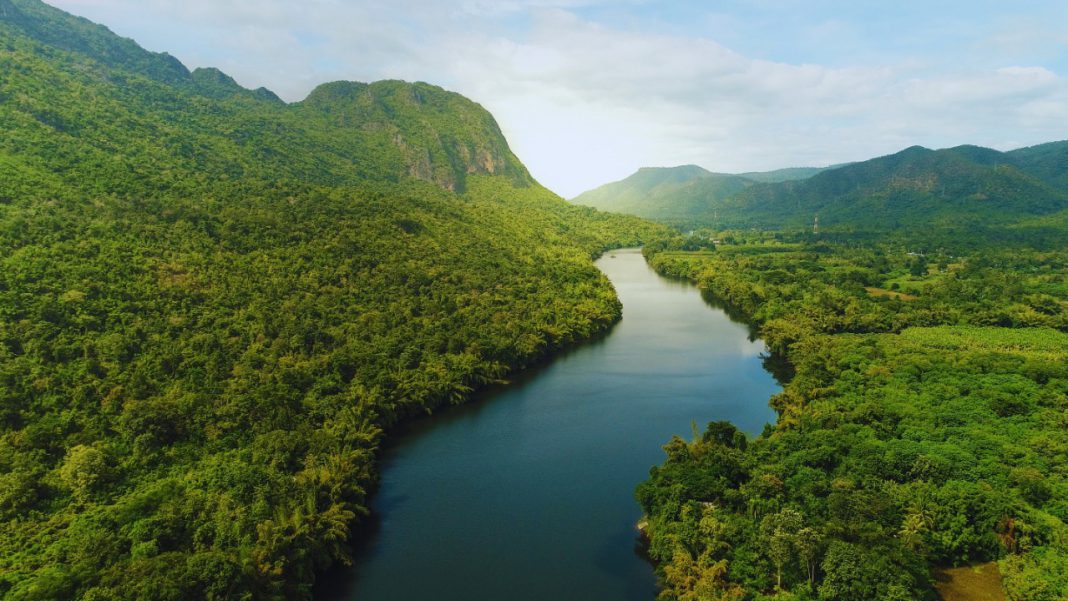PM Narendra Modi in his interaction with the nation in the 81st edition of Mann Ki Baat urged people to make efforts to curb pollution and collectively conserve Indian rivers.
Why is river conservation the need of the hour?
While 70% of the Earth’s surface is covered with water, yet only 3% of it is freshwater! Of which, almost two-thirds of it is tucked away in glaciers or is unavailable. Freshwater systems are among the most endangered habitats in the world, primarily due to human development, pollution, and climate change. Only 70 out of the world’s 177 longest rivers today remain free of man-made obstructions.
Rivers: Personification of sanctity, purity & godliness in India
India is a land of mystics and sages, filled to the brim with abundant treasures of knowledge and wisdom, accumulated over millions of years.
Here, rivers are not merely source of water, to fulfil our day to day requirements, rather, it embodies a much wider persona. In our ancient scriptures, it has been revered and personified as goddesses.
Ganga, the holy river is postulated as the lifeline of India and the cradle of human civilizations across ages. The river also known as Gange, Jahnavi, Nikita, Bhagirathi, Alaknanda, and Vishnupadi descended from heavens, flowing from Lord Shiva’s Jata on the request of king Bhagiratha of the Ikshvaku dynasty.
An indispensable part of our ecosystem
– Critical for sustaining biodiversity: An ecosystem is the sum of interactions between plants, animals, and micro-organisms interwoven in a delicate balance that exists within the environment. And, rivers find their place right at its center.
Rivers are indeed an indispensable part of our ecosystem. And, ecological, archaeological, and historical evidence has time & again ushered the imminence of rivers in sustaining not just our ecosystem, but also our Culture & Economy.
Rivers support more than 100,000 species of flora and fauna, which include apart from fish, worms, mollusks, crayfish, etc. Reeds and rushes along the shores shelter frogs and newts.
– Critical for extracting resources: Rivers are a source of plenty of resources necessary for sustaining lives i.e., food, water, agricultural products, pearls, etc.
– Critical for averting disasters: Rivers play a crucial role in controlling floods if their natural flow is not altered by the construction of dams and other water development projects.
Thus, it’s highly critical to save our rivers from dying an unnatural death, owing to mindless human activities. For this, steps have been taken at multiple levels to revitalize and conserve our rivers.
– Steps taken by Government:
National Plan for Conservation of Aquatic Eco-systems (NPCA): The scheme launched by the Ministry of Environment, forests and climate change aims at holistic conservation and restoration of wetlands including lakes for achieving the desired water quality enhancement, besides improvement in biodiversity and ecosystem through an integrated and multidisciplinary approach and a common regulatory framework.
Under the scheme, financial support is provided on a cost-sharing basis between Central Government and State Governments for various activities such as interception, diversion, and treatment of wastewater, shoreline protection, lakefront development, de-silting, Lake beautification, survey & demarcation, fisheries development, biodiversity conservation, etc.
Wetlands (Conservation & Management) Rules, 2017:
The wetlands rules, 2017 was enacted to promote the ‘wise use’ of Wetlands, to ensure sustainable development of the wetland ecosystem. In this context, the activities that have a potentially adverse impact on wetlands are prohibited or regulated.
4-pronged rejuvenation of wetlands projects: The Ministry of Environment, forests, and climate undertook the restoration and rejuvenation of 130 wetlands under a four-pronged strategy, in which the nodal officers of these wetlands were trained in preparing focused management plans and in working out the health of the wetland. For the first time in the country, wetlands were graded between A to E as per their health.
– At the community level | Innovative startups are tackling pollution in river Ganga head on.
1.) Help Us Green:
As part of religious activities performed on the ghats of River Ganga, several biodegradable and non-biodegradable substances are immersed in the river that collectively leads to its pollution. Flowers are a staple offering at religious places throughout the country. However, they often end up in rivers.
Around 8 Million tonnes of flowers are dumped in the river, every year. It accounts for more than 16% of the total waste that ends up in one of India’s holiest rivers. Although flowers are thought to be completely biodegradable, but the sheer volume combined with pesticides and insecticides leads to toxic waters, one of the primary causes of hepatitis b, cholera and diarrhea.
What is the solution?
Thus, 2 young entrepreneurs from Kanpur, Ankit Agrawal and Karan Rastogi found an ingenious solution to the seemingly complex problem in 2015 to ensure that ‘devotion does’nt turn into pollution’.
The startup upcycles temple waste to produce India’s first charcoal and chemical free incense sticks and scents, world’s first biodegradable thermocol and nutrient rich vermicompost.
How to go about it? (Procedure)
For this, floral waste is collected from religious places like temples, gurudwaras, mosques, located along the ghats of Ganga.
This floral waste is first segregated and then treated. These are dried and then mixed with organic cow dung with about 17 natural components like corn cobs, coffee residue, etc to increase the nitrogen content in the end-product. Earthworms are then added to the mix after a gap of few days that lead to the formation of a nutrient rich vermicompost in a period of 2 months.
While 80% of the flowers are used for making vermicompost, the rest of them are crushed to make incense sticks. The process is entirely cyclic and ensures that absolutely nothing goes waste. In addition, the products made by Help Us Green are packaged using discarded cartons from a liquor factory in Kanpur.


Comment here